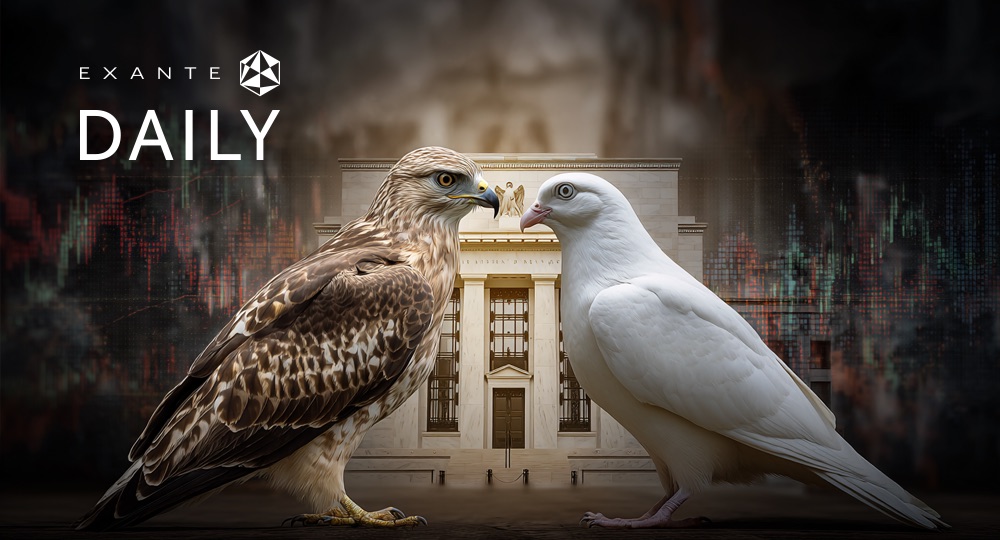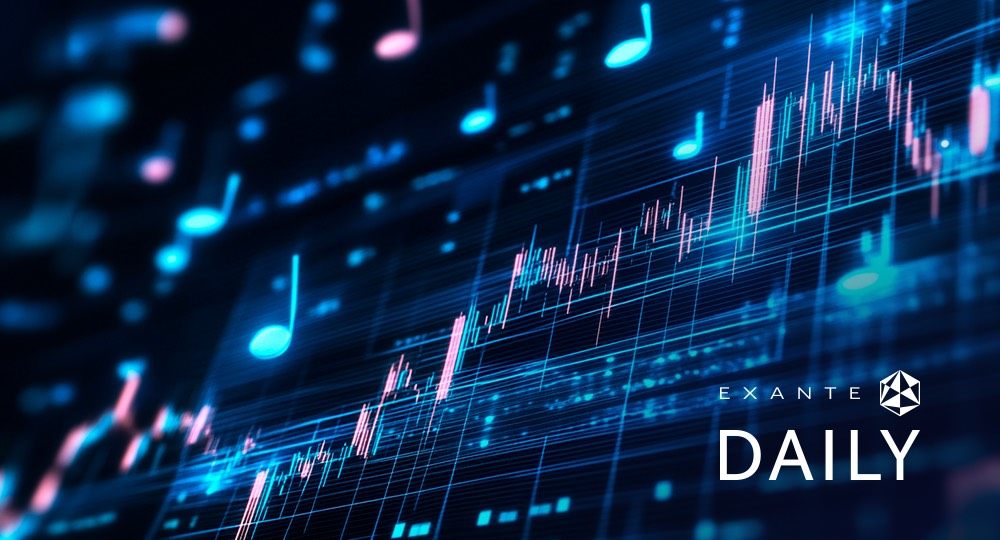By Renée Friedman, PhD
The week in summary:
Welcome to Macro Insights #21. This week markets continued to react to a hawkish Fed, rising stagflation risks in the UK, Covid closures in China, and the ongoing crisis in Ukraine.
Members of the Fed have continued to support an aggressive anti-inflation stance including Fed Governor Christopher Waller who said he supports raising interest rates by a half-a-percentage point in May and "possibly more" in June and July. Although headline CPI rose to 8.5% in March, the biggest yearly rise since late 1981, Fed Governor Lael Brainard signalled she was heartened by a moderation in core inflation in March that could point to some cooling ahead, Traders are now anticipating 50-basis-point interest rate hikes over the next couple of months, as the Fed attempts to balance on the delicate tightrope of curbing inflation without pushing the economy into recession. Recent yield flattening (normally the gap between two- and 10-year US yields) has indicated that the US is heading towards a recession. Much will depend on what happens with energy supplies and prices in addition to rising supply constraints due to Covid closures in Shanghai, China as diverted cargoes and container congestion becomes more of a problem and as food prices rise due to lack of fertilisers resulting from the Ukrainian crisis. A tight labour market (total nonfarm payroll employment rose by 431,000 in March, and the unemployment rate declined to 3.6 percent) may mean the US economy is capable of remaining resilient, particularly if rents and trucking rates come down. However many think the economy is running too hot and that the Fed may need to really raise rates quickly to cool the situation. The Fed funds rate is expected to be 2.50%-2.75% by the end of 2023. This fear of rate rises has affected global stock markets, particularly tech and growth stocks.
The ECB, in its meeting on 14 April, decided to not raise rates and stick to plans to slowly unwind its stimulus programme. In its official statement the ECB Governing Council said that the incoming data since its last meeting reinforced its expectation that net asset purchases under its asset purchase programme should be concluded in the third quarter. It will cut bond buys under its Asset Purchase Programme to 30 billion euros in May and 20 billion euros in June from the current 40 billion euro pace, with purchases ending at some point in the third quarter. Any adjustments to the key ECB interest rates will take place some time after the end of the net purchases and will be gradual. The bank added that “conditions of high uncertainty” meant it would maintain “optionality, gradualism and flexibility” in its monetary policy decisions. Inflation in the euro area hit 7.5% in March from 5.9% in February. “Inflation has increased significantly and will remain high over the coming months, mainly because of the sharp rise in energy costs,” the ECB said in a statement. European gas prices are up 45% y/o/y. ECB President Christine Lagarde said that the ECB is very aware of this cost of living crisis caused by this rapid inflation growth and the impact it will have on production. She also noted the problem of sourcing following on from the closures in China and the events in Ukraine. She did stress that the situation between the US and the ECB is very different; unemployment, at 6.8% in February is at its lowest ever, but there is still plenty of labour availability, and wage growth remains muted in Europe (it is up 5.1% in the US on y/o/y basis). She stated that the downside risks for growth are much worse for Europe because of the Ukrainian crisis and the loss of confidence it is causing for consumers and producers as well as the energy situation in Europe being far different to the US. The ECB again said it will take whatever action is needed to fulfil its mandate to pursue price stability and to contribute to safeguarding financial stability. Markets are now pricing in quarter-point rate hikes in September and December.
In the UK, inflation reached a year high, coming in at 7% in March versus an expected 6.7%), with core at 5.7%. This headline CPI was up from February’s 6.2%. GDP grew by 0.1% in February 2022, following 0.8% growth in January 2022. Inflation is likely to accelerate in April when a 54% increase in energy bills is set to kick in, adding about 1.8 points to the headline rate. Consumer energy bills are expected to increase yet again when the price cap is raised again in October if global energy prices remain at current levels. This could push inflation into double digits for the first time since the 1980s. This will increase social and political pressure on the government to take action to deal with the cost of living crisis as annual goods inflation (9.4%) running at more than double the rate of services inflation (4%), Meanwhile the Bank of England (BoE) is in a precarious position; it must seek to fight inflation while dealing with significantly slower growth. The spectre of stagflation looms very large.
Oil prices jumped again this past week as President Putin said the peace talks had hit a dead end. Despite the International Energy Agency (IEA), on Tuesday, 12 April, lowering expectations for worldwide demand. It also said rising global production could offset Russian oil output losses. The IEA said it expects Russian output to drop 1.5 million bpd in April, growing to close to 3 million bpd from May. The US is releasing 180 million barrels from its reserves over six months, part of a release of 240 million barrels from IEA members.
Things to look out for this coming week
This coming week will be a relatively quiet one following on from most markets being closed on Good Friday and with others also closed on Easter Monday.
- In Europe on Friday there is French and Italian CPI data. On Wednesday there is German PPI and Eurozone Industrial production data. On Thursday is Eurozone HICP data; this measures changes in purchasing trends and inflation in the Eurozone. There is also Eurozone consumer confidence survey data on Thursday.
- In the US on Friday there is capacity utilisation rate and industrial production data. On Tuesday there is building permits and housing starts data. On Wednesday is Existing Home sales and the Fed Beige book. On Thursday look out for initial and continuing jobless claims data as well as the Philadelphia Fed Manufacturing Survey.
- In the UK look out for Bank of England (BoE) Governor Andrew Bailey’s speech on Thursday.
Keep an eye out for Chinese GDP, Retail sales, and Industrial production data on Monday 18 April. A slowdown in China will have an impact on the rest of Asia and a slowdown in Industrial production will likely correspond to longer supply constraints for global manufacturing that are dependent upon Chinese-made inputs, e.g. semiconductors and the automotive industry. There is also the People’s Bank of China (PBoC) interest rate decision on Wednesday. The PBoC is very likely to cut interest rates for the second time this year and reduce the reserve requirement ratio (RRR) to help bolster the economy as it has been suffering under Covid lockdowns.The State Council said on Wednesday, 13 April that it will “step up financial support to the real economy, especially industries and small businesses that have been hit hard by the pandemic.”
Remember that stock markets in Europe, North America, the UK, New Zealand and Australia close on Good Friday (15 April) and US Bond markets will operate on an abbreviated schedule, closing Friday at 2 p.m. Eastern time.
And finally the 2022 Spring Meetings of the World Bank Group and the International Monetary Fund (IMF) will take place from 18-24 April 2022.
All hail the mighty consumer?
For those worried about the risk of recession, some point to the strength of labour markets and the accumulated savings (during Covid) that will continue to fuel demand. Is this actually correct?
In the US, although the labour market does remain exceptionally tight, according to Bloomberg, consumer borrowing surged in February by the most on record, reflecting outsized increases in both credit-card balances and non-revolving loans. According to Federal Reserve data, total credit surged $41.8 billion from the prior month after a revised $8.9 billion gain in January, Outstanding Revolving credit, which includes credit cards, rose $18 billion. Non-revolving credit, which includes auto and school loans, increased $23.8 billion. Both advances were among the biggest on record.
In the UK, 83% of adults reported an increase in their cost of living in March 2022. The Office for Budget Responsibility expects household post-tax incomes adjusted for inflation to start falling in Q2 2022 and not recover until Q3 2024. Even though labour markets in the UK are also tightwith the Office for National Statistics estimating the number of payrolled employees for March 2022 showing a small monthly increase (up 35,000 on the revised February 2022) to a record 29.6 million, credit card borrowing is up. As noted by The Guardian, figures from the Bank of England showed credit card borrowing jumped by £1.5bn in February to £59.5bn – the highest since records began in 1993 – pushing the total amount of unsecured lending up by 90% on the prior month to £1.9bn.
According to the ECB, in the Eurozone, private consumption contracted more than expected in the fourth quarter of 2021 and stood 2.5% below its pre-pandemic level. Real disposable income is expected to decline strongly in the first quarter of 2022 on the back of higher inflation and lower net fiscal transfers. However, as the ECB has acknowledged, the concentration of savings is in wealthier and older households that have a lower propensity to consume, while households in the lower income groups remain more exposed.
In short, it seems that many of us are living on borrowed money and borrowed time. Savings that may have accumulated during the height of the pandemic when people were forced to stay home and what they may have received through fiscal transfers, are not enough to absorb the income squeeze from higher energy bills. This means that not only central banks have to take action, but governments do too. Without further state support, which in itself may cause problems with state debt levels and yield spreads, the likely reduction in consumer spending could cut GDP growth across global markets. Although inflation may dissipate as, for example, Chinese demand slows, the risks remain: an increase in bankruptcies and a less confident consumer.
DISCLAIMER: While every effort has been made to verify the accuracy of this information, EXT Ltd. (hereafter known as “EXANTE”) cannot accept any responsibility or liability for reliance by any person on this publication or any of the information, opinions, or conclusions contained in this publication. The findings and views expressed in this publication do not necessarily reflect the views of EXANTE. Any action taken upon the information contained in this publication is strictly at your own risk. EXANTE will not be liable for any loss or damage in connection with this publication.
Dit artikel wordt u alleen ter informatie verstrekt en mag niet worden beschouwd als een aanbod of uitnodiging tot het kopen of verkopen van beleggingen of gerelateerde diensten waarnaar hier mogelijk wordt verwezen. Handelen in financiële instrumenten omvat een aanzienlijk verliesrisico en is mogelijk niet geschikt voor alle beleggers. In het verleden behaalde resultaten bieden geen betrouwbare indicatie voor toekomstige resultaten.






